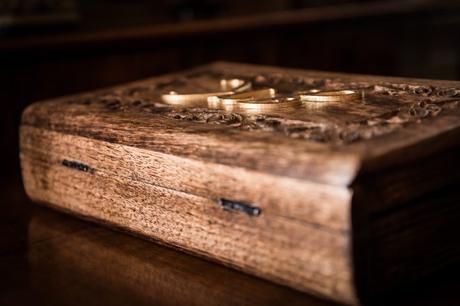
When considering the evidence for Jesus’ resurrection, one thing often overlooked is the lack of a second burial.
In ancient Jerusalem, families often shared tombs where deceased family and friends were laid on stone shelves. Bodies were “wrapped in grave-cloths along with a significant amount of spices, to offset the smell of putrification, on the usual assumption that other shelves in the cave would be required soon.”[1] Then after a year, the family would return and “collect the bones, fold them reverently and carefully…and place them in an ossuary.”[2] This would count as the second burial and cleared tomb space for future burials.
Here’s the interesting thing – no account exists of a second burial for Jesus’ body.
- If the data existed, wouldn’t the enemies of Christianity have pointed to it?
- Jesus’ life was carefully documented, why would the second burial also be written down?
What is written down casts doubt that a second burial ever occurred at all.
- At the precise time the second burial should have occurred, the record talks about his friends “proclaiming him as Messiah…on the grounds that he had been raised from the dead.”[3]
- Also at this time, the Christian church’s persecutor, Saul of Tarsus, claimed to have encountered the risen Jesus and become a Christian evangelist.
Perhaps the reburial happened privately so wasn’t documented. Could Jesus’ disciples have stolen the body as a way of concocting a resurrection myth?
- Why? No-one in first century Judaism expected resurrections to work this way, so why would they concoct something they weren’t expecting?
- This implicates the disciples in a coverup. Yet the historical record establishes high confidence that many were martyred for their Christian faith. “Lying about something is a poor thesis for being a martyr.”[4]
- How does this explain Saul going from persecutor to Christian evangelist?
- If Jesus was still dead when Christianity erupted in the city where he was killed and buried, why wasn’t his dead body produced by the authorities to stop the Christians from preaching his resurrection?
Absence of evidence isn’t evidence of absence, so we cannot be 100% sure. But given the history of the early Christian church combined with Saul’s conversion, isn’t it reasonable to posit that there’s no evidence of Jesus’ second burial because no body remained and days after his public execution, the tomb was empty, and friends and enemies alike did encounter him alive again in a new way?[5]
Image courtesy of Pexels.
[1] N. T. Wright, The Resurrection of the Son of God, (London Society for Promoting Christian Knowledge, 2003), 707.
[2] Wright, 708.
[3] Ibid.
[4] Evidence for the Empty Tomb, The Resurrection of Jesus, Gary Habermas, in the Credo Courses, accessed May 6th, 2017, http://www.credocourses.com/product/the-resurrection-of-jesus/.
[5] 1 Corinthians 15:3-8; Acts 2:32.
